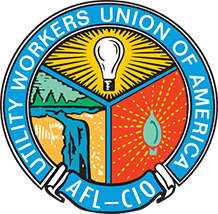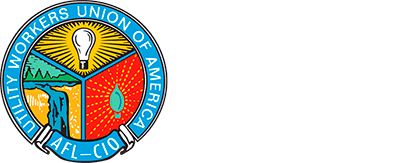“I dig in the dirt, fix water mains and stuff like that every day, I’m a union worker,” says Rick Dunham, chair of the Local 428 Safety Committee at Aqua Ohio. “I’ll be the first to say that I was skeptical about the participation we would have in our Systems of Safety training classes. I’m one of the guys. I know how we often push things away that are out of the ordinary. What we’re doing here is out of the ordinary. And it’s history-making!”
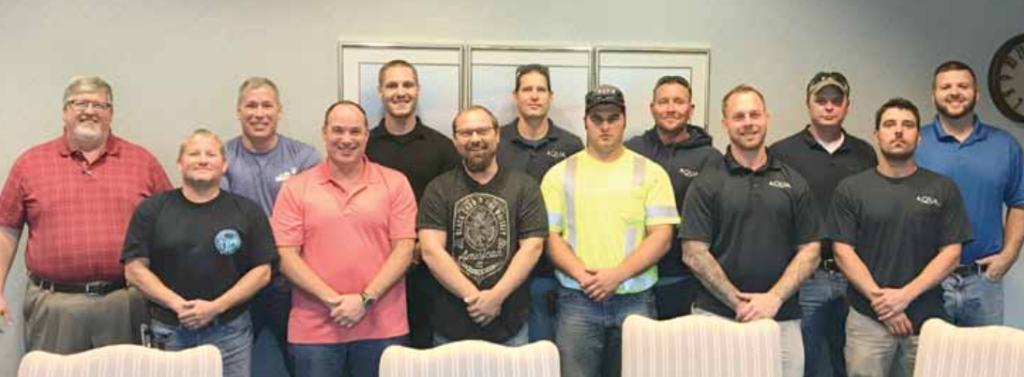
‘Doing this as a team’
Dunham is commenting on the recently implemented Power for America Systems of Safety (SOS) training that is, in the words of the President of Aqua Ohio, Ed Kolodziej, “Building a culture of safety at the company.” He adds, “It doesn’t make a difference if you’re working in distribution, a treatment plant or an office, we’re doing this as a team. By working together we give all workers the authority to correct unsafe situations when they see them because we all care about each other.”
Traditional safety programs involve lecture-style presentations of rules and regulations, the deployment of proper safety equipment, and the training to use it. While all of that is good, it fails to address the root cause of most accidents: workers not following safety procedures.
Changing behavior
“To effectively address the underlying reason for most accidents, workers’ behavior must change,” explains UWUA National Safety Director Scotty MacNeill. “In order to do that, a culture of safety must be built in each company to support and encourage the practice of proper safety measures.”
That’s exactly what’s happening at Aqua Ohio, thanks to management’s willingness to work with the union to adopt and implement the UWUA’s Power for America P4A SOS training. As in all P4A programs, utility workers are the trainers because they know best how to get the job done correctly, safely, and on time.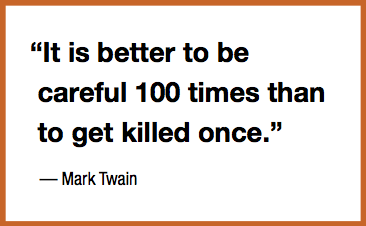
Making a difference
The training is ongoing with refreshers taking place throughout the year. Participants include Aqua Ohio union and non-union employees from all departments. They are all intermingled because, in Dunham’s words, “A supervisor is going to have a different outlook than a distribution worker. A distribution worker is going to look at something different than a plant mechanic.” Those different outlooks and experiences are important when tackling safety issues.
“I’ve been an advocate of safety training throughout my 25 years with Aqua,” says President of Local 425 Cliff Deem, who is a member of the Safety Committee and now an SOS trainer. “Aqua management has jumped in with both feet and is working closely with Rich Cossell, our National Rep. We’ve moved light years in just a few months. We’re getting a lot of positive feedback and everyone is excited about this new way of safety training.”
Cossell worked closely with MacNeill and Aqua Ohio Director of Operations, Pete Kusky, to get the program started.
Workers provide solutions
“There are three legs to the stool we are building,” Kusky explains. “The first leg is a joint management/union Safety Committee where frontline workers and management meet monthly and work collaboratively toward identifying areas to improve solutions. The second leg involves peer-to-peer safety rides where individual members of the Safety Committee conduct surprise safety inspections of their peers. This information is funneled back to the committee in the form of anonymous reports. The third leg is P4A training, which is lead by front-line workers.”
As a result, solutions to safety issues do not come from top managers and supervisors; rather, they come from the workers themselves, who collaborate with management to make improvements.
“To be a success requires relationship building, trust, partnership, and the courage to change,” Cossell says.
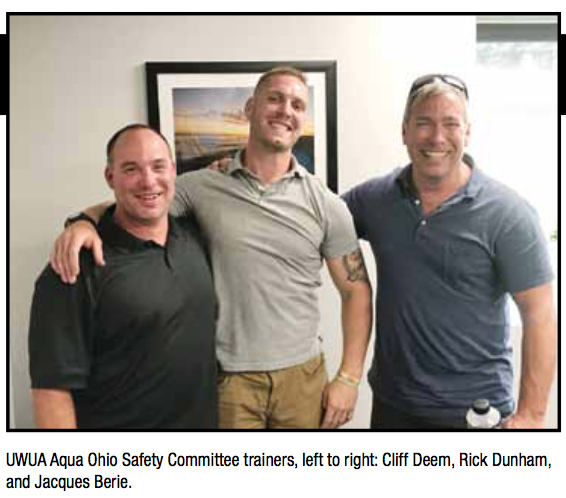
“The SOS’s behavior based training is very important to all of us now,” Deem says. “When we’re healthy and able to come to work and go home safely to enjoy time with our family, everybody benefits.”
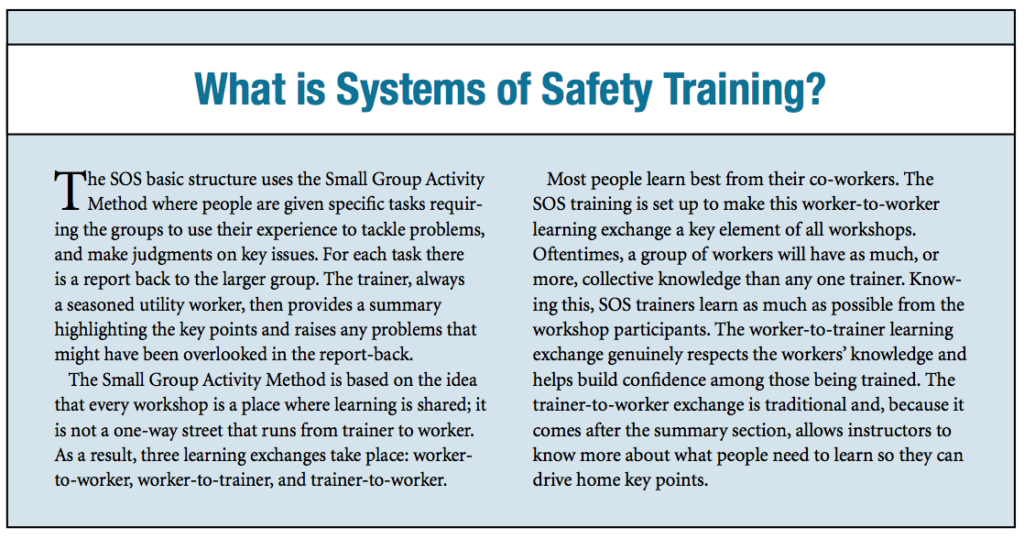
What is Systems of Safety Training?
The SOS basic structure uses the Small Group Activity Method where people are given specific tasks requiring the groups to use their experience to tackle problems, and make judgments on key issues. For each task there is a report back to the larger group. The trainer, always a seasoned utility worker, then provides a summary highlighting the key points and raises any problems that might have been overlooked in the report-back.
The Small Group Activity Method is based on the idea that every workshop is a place where learning is shared; it is not a one-way street that runs from trainer to worker. As a result, three learning exchanges take place: worker-to-worker, worker-to-trainer, and trainer-to-worker.
Most people learn best from their co-workers. The SOS training is set up to make this worker-to-worker learning exchange a key element of all workshops. Oftentimes, a group of workers will have as much, or more, collective knowledge than any one trainer. Knowing this, SOS trainers learn as much as possible from the workshop participants. The worker-to-trainer learning exchange genuinely respects the workers’ knowledge and helps build confidence among those being trained. The trainer-to-worker exchange is traditional and, because it comes after the summary section, allows instructors to know more about what people need to learn so they can drive home key points.
